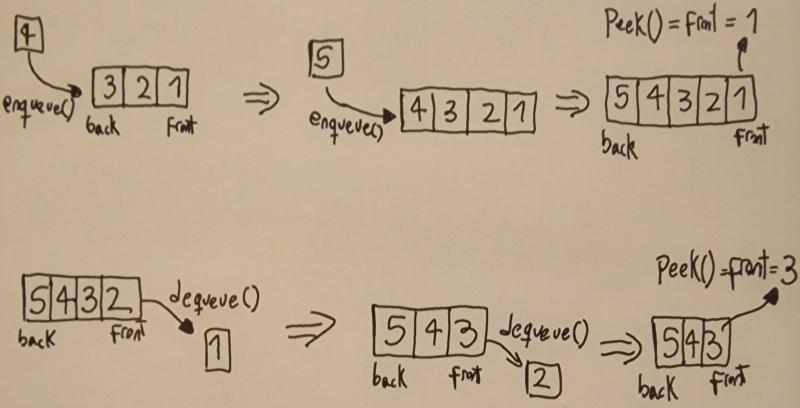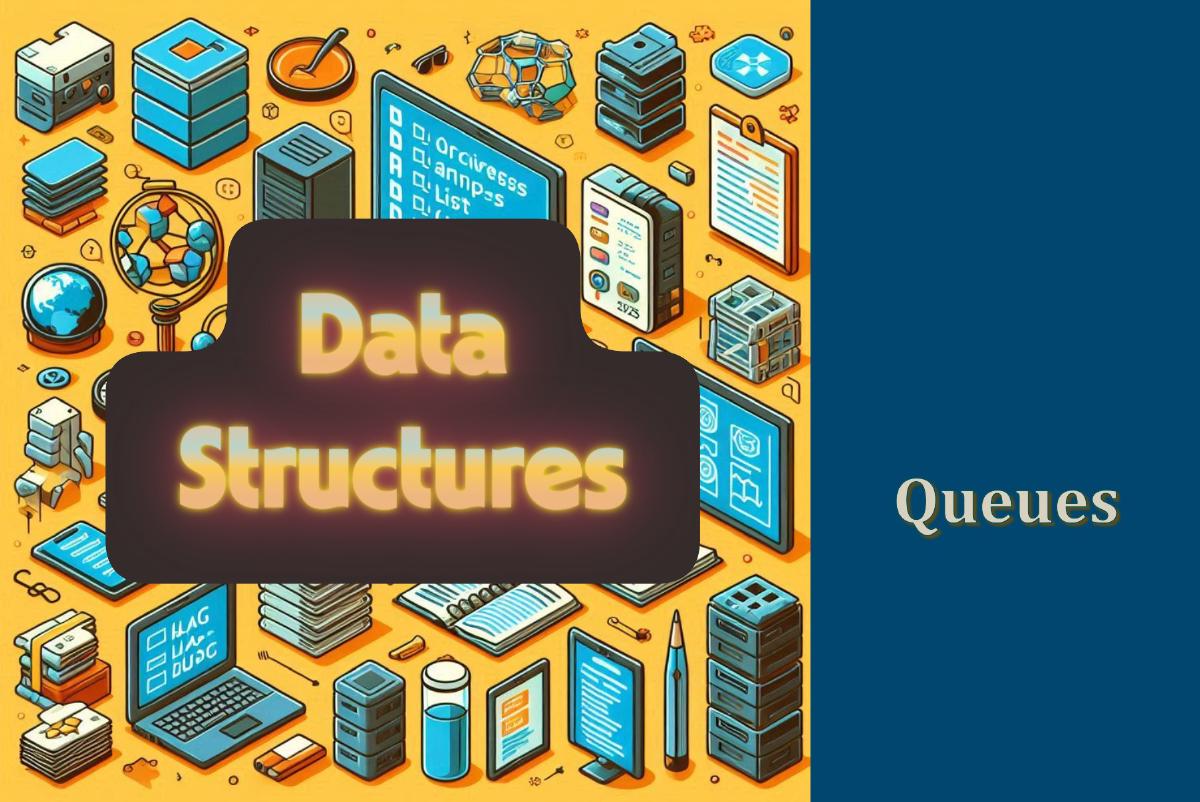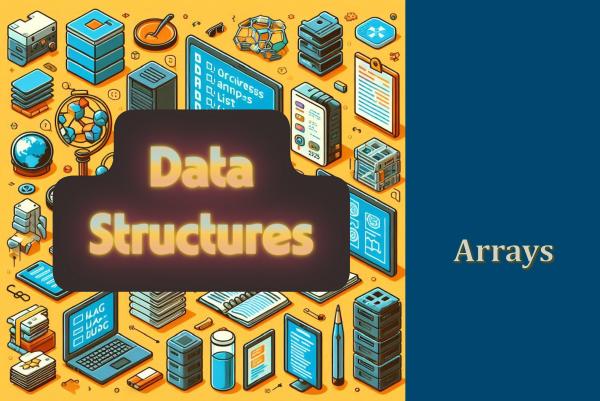The FIFO (first in, first out) nature of queues is because only the initial element can be accessed and manipulated. When an element is added to the queue it is known as “enqueue”, while removing an element is called “dequeue”.
This causes the first element to be added to the queue to also be the first to be removed, hence its FIFO behaviour.

Main operations#
The basic queue operations are:
- Enqueue: Adds an element to the end of the queue.
- Dequeue: Removes the element from the front of the queue.
- Peek: Gets the front element without removing it.
- isEmpty: Checks if the queue is empty.
Implementation#
Like stacks, queues can be implemented using linked lists. Elements are added at the end and removed from the front by keeping references to both ends.
class Node:
def __init__(self, value):
self.value = value
self.next = None
class Queue:
def __init__(self):
self.front = None
self.end = None
self.size = 0
def enqueue(self, value):
new_node = Node(value)
if self.end is None:
self.end = new_node
self.front = new_node
return
self.end.next = new_node
self.end = new_node
self.size += 1
def dequeue(self):
if self.is_empty():
return None
value = self.front.value
self.front = self.front.next
if self.front is None:
self.end = None
self.size -= 1
return value
def peek(self):
if self.is_empty():
return None
return self.front.value
def is_empty(self):
return self.front is None # Returns true if front is None
def __len__(self):
return self.size
def __str__(self):
values = []
current = self.front
while current:
values.append(str(current.value))
current = current.next
return "\n".join(values)
print("Creating a new queue")
queue = Queue()
print("==========")
print("Check if queue is empty")
print(f"Is queue empty? {queue.is_empty()}")
print("==========")
print("Enqueue three elements")
queue.enqueue("ABC")
queue.enqueue("DEF")
queue.enqueue("GHI")
print("==========")
print("Print queue after enqueuing elements:")
print(queue)
print("==========")
print("Get front element using dequeue")
print(f"queue.dequeue() => {queue.dequeue()}")
print("==========")
print("Print queue after dequeue element:")
print(queue)
print("==========")
print("Print front element using peek")
print(f"queue.peek() => {queue.peek()}")
print("==========")
print("Print queue after peek:")
print(queue)
print("==========")
print("Get front element using dequeue")
print(f"queue.dequeue() => {queue.dequeue()}")
print("==========")
print("Print queue after dequeue element:")
print(queue)
print("==========")
print("Check if queue is empty")
print(f"Is queue empty? {queue.is_empty()}")
print("==========")
print("Get front element using dequeue")
print(f"queue.dequeue() => {queue.dequeue()}")
print("==========")
print("Print queue after dequeue element:")
print(queue)
print("==========")
print("Check if queue is empty")
print(f"Is queue empty? {queue.is_empty()}")
Usage examples#
Some common uses of queues:
- Print queues where first in, first printed.
- Task queues in operating systems for execution order.
- Simulations where arrival order must be respected like in banks.
- Message queues like RabbitMQ or Kafka.
- Circular buffers in audio for streaming.
Conclusion#
Queues are versatile structures thanks to their FIFO principle. Having a good handle on queues, implementation, and applications will reinforce your skills as a programmer.
Cheers for making it this far! I hope this journey through the programming universe has been as fascinating for you as it was for me to write down.
We’re keen to hear your thoughts, so don’t be shy – drop your comments, suggestions, and those bright ideas you’re bound to have.
Also, to delve deeper than these lines, take a stroll through the practical examples we’ve cooked up for you. You’ll find all the code and projects in our GitHub repository learn-software-engineering/examples.
Thanks for being part of this learning community. Keep coding and exploring new territories in this captivating world of software!








